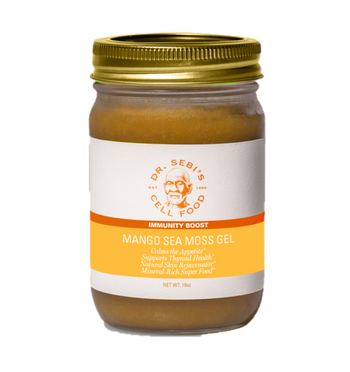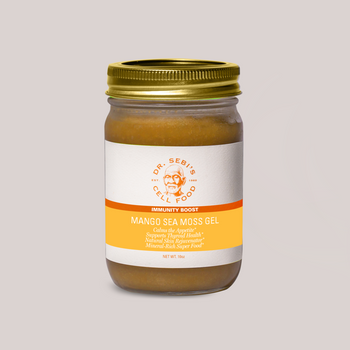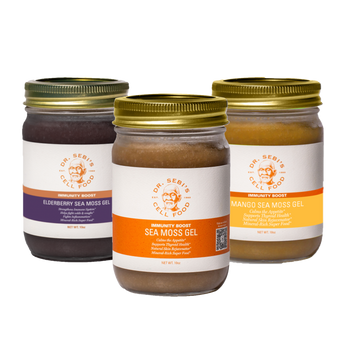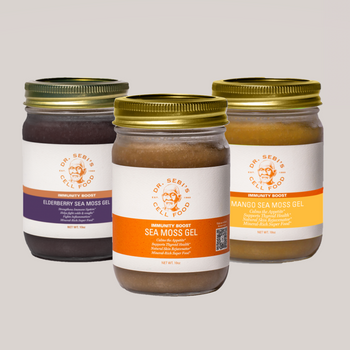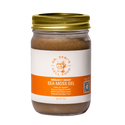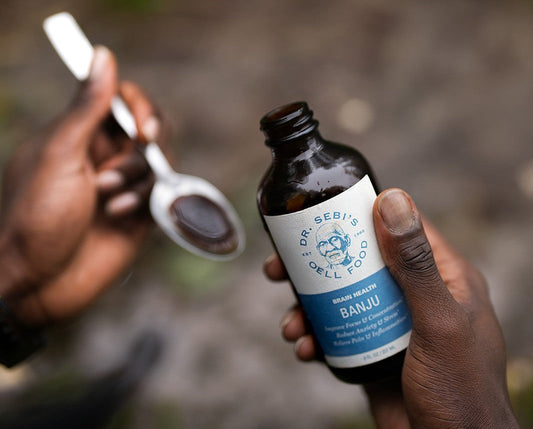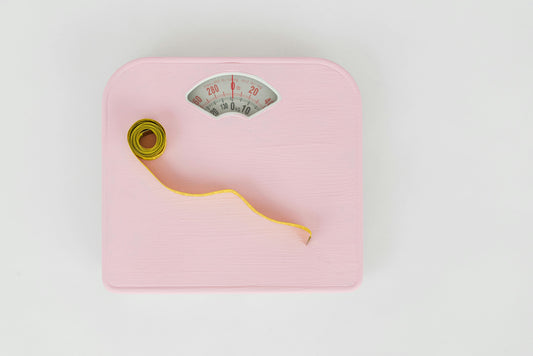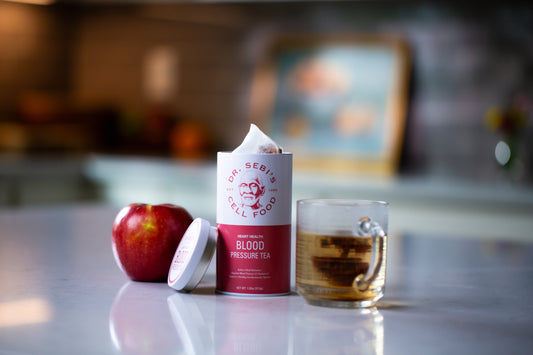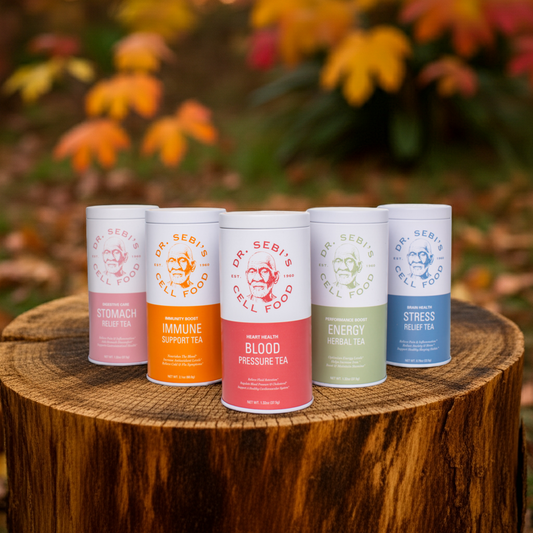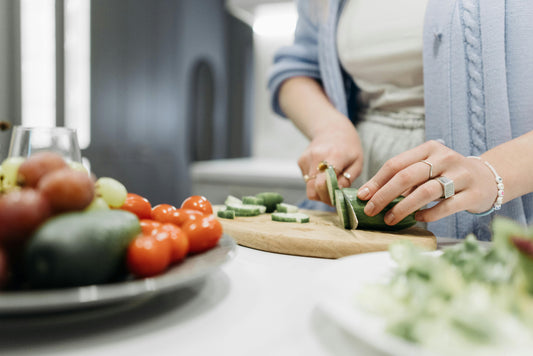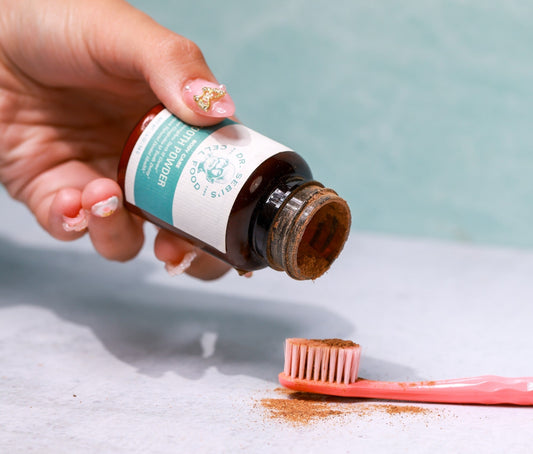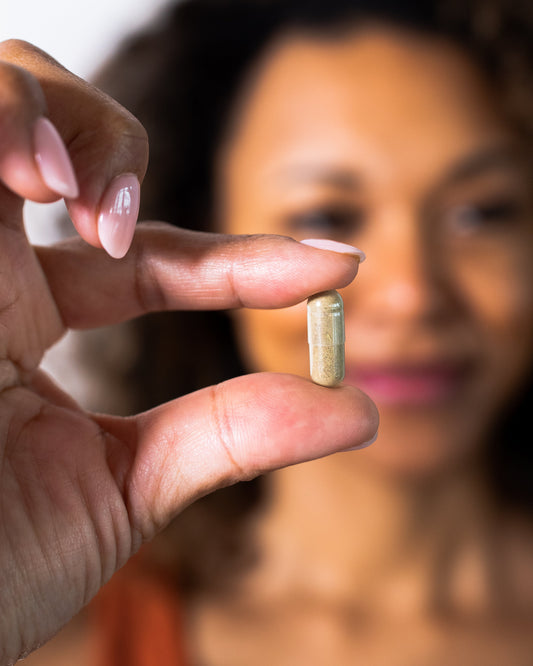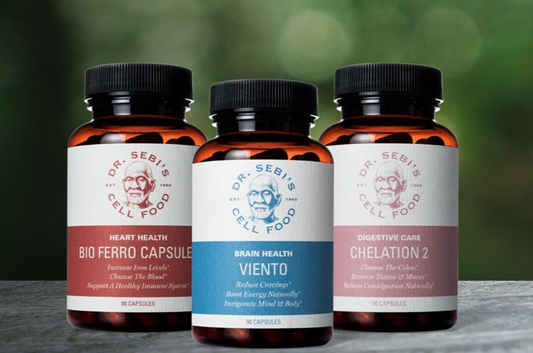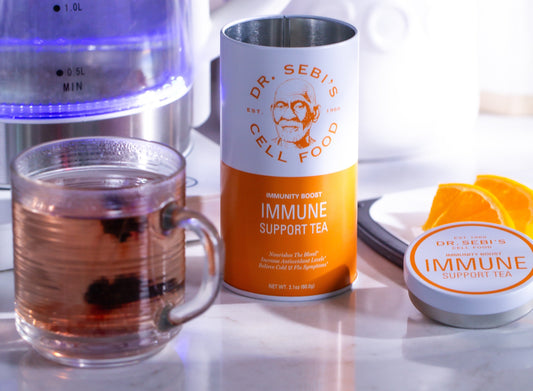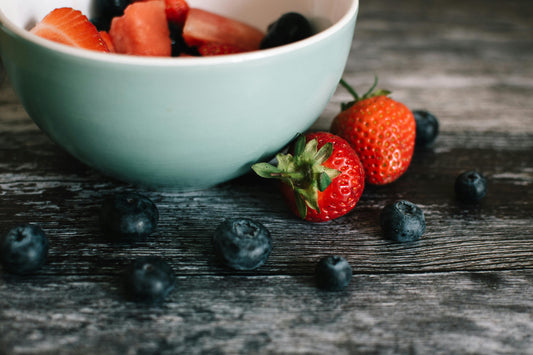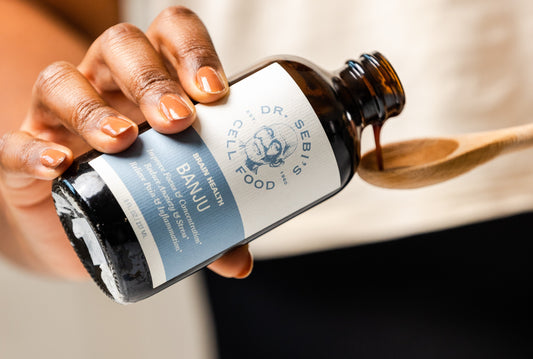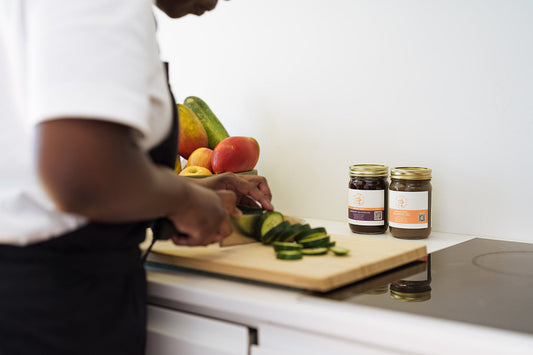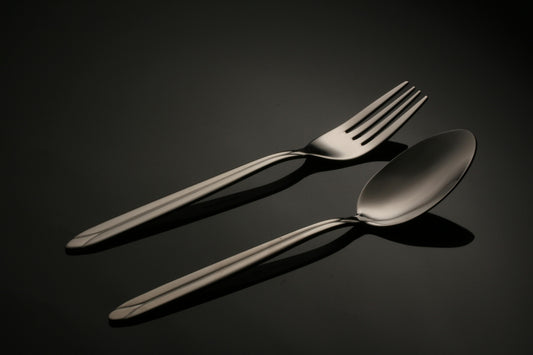A healing lifestyle begins not at the table, but in the kitchen. The foods we keep within reach shape how we eat, feel, and live each day. Yet most kitchens today are stocked for convenience, not nourishment—filled with processed sauces, refined grains, and bottled seasonings that slowly deplete the body’s vitality.
Dr. Sebi taught that "your food is your medicine." When your kitchen is stocked with living, alkaline foods, it becomes a place of healing rather than harm. Every ingredient either feeds life or feeds disease. Creating an alkaline kitchen means intentionally replacing acidic, mucus-forming foods with natural, mineral-rich alternatives that keep the body clean and energized.
This guide outlines the essentials of an alkaline pantry, refrigerator, and kitchen routine—so you can design your space to naturally support wellness, not sabotage it.
Why the Kitchen Matters in Healing
Health is not built in moments of willpower—it’s built by environment. If acidic snacks, processed condiments, or sugary drinks are the most accessible items in your home, they will dominate your choices.
By transforming your kitchen into an alkaline environment, you remove friction and temptation. You no longer need to resist unhealthy foods—they simply aren’t there. Instead, every option supports vitality, hydration, and balance.
Dr. Sebi’s approach focuses on prevention through preparation. A properly stocked kitchen ensures you always have the right ingredients to create nourishing meals that keep your body in harmony.
Understanding Alkaline Eating Basics
Before restocking, it’s helpful to recall Dr. Sebi’s foundational principles:
-
Eat Electric Foods – Choose natural, unprocessed plants that contain life energy.
-
Avoid Hybrid and Acidic Foods – Eliminate man-made hybrids and refined ingredients that cause mucus and acidity.
-
Prioritize Mineral-Rich Plants – Iron, magnesium, and potassium sustain the body’s electrical balance.
-
Stay Hydrated with Natural Water – Spring water and fresh fruits are vital to cleansing.
-
Simplicity Heals – Fewer ingredients, prepared cleanly, digest more easily.
Your pantry should reflect these laws of nature—minimal, mineral, and mindful.
The Alkaline Pantry: Dry Goods and Staples
These shelf-stable essentials make up the foundation of your daily meals. Keep them in glass jars or airtight containers to preserve freshness and prevent contamination.
1. Ancient Grains (Whole and Unprocessed)
-
Quinoa – High in protein and magnesium; perfect for bowls or salads.
-
Wild Rice – A rich source of minerals and fiber; more alkaline unlike white or brown rice.
-
Spelt Flour – Use for alkaline baking, flatbreads, and pancakes.
-
Fonio – A light, fluffy grain used in porridge.
Why They Matter:
Unlike acidic wheat or white rice, these grains provide clean energy without inflammation.
2. Legumes & Seeds
-
Chickpeas – Used for stews or spreads like alkaline hummus or tahini.
-
Hemp Seeds – High in omega fats and protein; ideal for smoothies or toppings.
-
Sesame Seeds – Excellent calcium source; can be blended into homemade alkaline “butter” or as a salad topping.
-
Walnuts – A mineral-rich fat source for heart and brain health.
Why They Matter:
These provide healthy fats and proteins without acidity or animal residue.
3. Herbs & Seasonings (Dry)
Replace synthetic seasonings with natural herbs that cleanse and nourish:
-
Basil – Adds flavor and supports digestion.
-
Oregano – Antimicrobial and aromatic.
-
Thyme – Strengthens respiratory and immune systems.
-
Sage – Soothes inflammation and supports cognition.
-
Cayenne Pepper – Stimulates circulation and metabolism.
-
Sea Salt (unrefined) – Provides trace minerals without chemicals.
Tip: Store herbs in small glass jars and restock monthly to preserve potency.
4. Natural Sweeteners
-
Date Sugar – Made from dried, ground dates; fully natural.
-
Agave Syrup (raw, dark) – A gentle sweetener that doesn’t spike acidity.
Why They Matter:
These sweeteners provide energy while keeping the blood alkaline.
5. Oils
-
Extra Virgin Olive Oil (Don't use for cooking) – Stable at low heat; perfect for dressings.
-
Avocado Oil – Ideal for sautéing and roasting.
-
Coconut Oil (Don't use for cooking) – Use sparingly for smoothies or desserts.
Avoid vegetable, soybean, or canola oils—they are heavily processed and mucus-forming.
The Alkaline Fridge: Fresh, Living Foods
Dr. Sebi’s nutritional approach centers around foods that are alive—vibrant, colorful, and full of water. Keep your fridge filled with these essentials, restocking weekly for freshness.
1. Leafy Greens
-
Kale – Iron-rich and energizing.
-
Watercress – Cleanses blood and enhances oxygenation.
-
Amaranth Greens (Callaloo) – Full of chlorophyll and magnesium.
-
Dandelion Greens – Detoxify liver and aid digestion.
2. Fruits (Seeded Only)
-
Berries (blueberries, strawberries, blackberries) – Antioxidant-rich.
-
Seeded Grapes – Support blood cleansing.
-
Avocados – Provide alkaline fats for hormone balance.
-
Figs and Dates – Natural energy and digestive support.
-
Melons – Hydrating and detoxifying.
Always choose fruits with seeds—Dr. Sebi emphasized that seedless hybrids lack natural life force.
3. Vegetables
-
Cucumbers – Cooling and hydrating.
-
Zucchini and Squash – Gentle on digestion.
-
Cherry Tomatoes – Provide antioxidants and flavor.
-
Bell Peppers – Add minerals and color variety.
4. Fresh Herbs & Roots
-
Ginger – Boosts circulation and supports detox.
-
Burdock Root – Cleanses the blood.
-
Thyme – Adds flavor and strengthens the respiratory system.
-
Tila or Chamomile Flowers (for teas) – Calm the nervous system.
5. Alkaline Beverages
-
Spring Water – The base of all hydration.
-
Herbal Teas – Burdock, dandelion, chamomile, tila, ginger.
-
Cucumber or Lime Water – Simple infused hydration throughout the day.
Freezer Essentials
Keep your freezer for convenience, not storage of processed food.
-
Frozen Berries or Greens – For quick smoothies.
-
Sea Moss Gel (pre-made) – Freeze in small portions for longer shelf life.
-
Homemade Vegetable Broth – Base for alkaline soups and stews.
The Alkaline Kitchen Toolkit
Beyond food, certain tools make the alkaline lifestyle easier and more consistent.
1. Glass Jars & Containers
Avoid plastic storage, which can leach chemicals into food. Use clear glass jars for grains, herbs, and seeds.
2. Blender
Essential for smoothies, sea moss drinks, and soups.
3. Cast Iron or Stainless-Steel Cookware
Avoid aluminum or non-stick pans that can release toxins under heat.
4. Steamer Basket or Bamboo Steamer
Preserves nutrients while cooking vegetables gently.
5. Electric Kettle or Stovetop Pot
For quick herbal teas.
6. Wooden Utensils & Cutting Boards
Plastic and synthetic utensils may release microplastics; choose natural materials.
How to Transition Your Kitchen
If your pantry is currently stocked with processed or acidic foods, don’t overhaul it overnight. Transition gradually—replace one category at a time.
Step 1: Eliminate the Top Acidic Offenders
-
Dairy products
-
Refined sugars
-
White flour and rice
-
Caffeine and alcohol
-
Processed condiments (ketchup, soy sauce, mayonnaise)
Step 2: Replace Each With an Alkaline Alternative
|
Acidic Item |
Alkaline Swap |
|
Cow’s Milk |
Homemade walnut or hemp milk |
|
White Bread |
Spelt or quinoa flatbread |
|
Table Salt |
Sea salt |
|
Refined Sugar |
Date sugar or agave |
|
Butter |
Avocado oil or coconut oil |
Step 3: Restock Weekly and Keep It Visible
Display fruits and herbs prominently. When your kitchen looks alive, you’ll feel inspired to eat that way.
Creating Alkaline Meal Foundations
A well-stocked alkaline kitchen lets you build quick, balanced meals anytime.
Breakfast Ideas
-
Quinoa porridge with dates and walnuts.
-
Watercress smoothie with sea moss and hemp seeds.
-
Warm ginger-key lime water to awaken digestion.
Lunch Ideas
-
Wild rice bowl with kale, squash, and avocado.
-
Dandelion salad with key lime dressing and walnuts.
-
Spelt wrap with sautéed amaranth greens and cherry tomatoes.
Dinner Ideas
-
Steamed zucchini and quinoa with thyme.
-
Soup with vegetables, kale, and squash broth.
-
Tila tea and fresh fruit for a light finish.
Tips for Maintaining an Alkaline Kitchen
-
Keep It Simple – Too many ingredients lead to overwhelm. Stick to core staples.
-
Label Everything – Use jars with names and purchase dates.
-
Shop with Intention – Avoid aisles of packaged foods; focus on produce and bulk bins.
-
Clean as You Cook – A tidy kitchen promotes calm and clarity.
-
Rotate Herbs and Greens – Prevent stagnation and nutrient gaps.
-
Prep Once, Eat All Week – Batch-cook grains and chop greens for easy access.
-
Hydrate Constantly – Keep a pitcher of cucumber or key lime water visible at all times.
Common Mistakes to Avoid
-
Stocking Too Many Processed “Health Foods.”
Even organic chips, protein bars, and bottled juices can be acidic and over-processed. -
Relying on Substitutes Instead of Simplicity.
Don’t try to recreate old habits—build new ones with whole foods. -
Letting Food Go to Waste.
Buy small amounts and restock often. Freshness equals vitality. -
Using Tap Water for Cooking.
Chlorinated water introduces acidity. Always use spring or distilled water.
Dr. Sebi’s Perspective
Dr. Sebi viewed the kitchen as a sacred space—the center of healing. He often said that when we prepare food with intention, we transfer energy to it. He urged people to “cook with awareness,” using natural herbs and mineral foods as medicine for the blood.
His vision of the alkaline kitchen was minimalist but abundant in life force—fresh greens, seeded fruits, and herbs that cleanse rather than clog. By structuring your kitchen this way, you embody one of his core teachings: that healing begins at home, long before symptoms appear.
Conclusion
An alkaline kitchen isn’t just a place to cook—it’s a sanctuary of health. By removing acidic foods and replacing them with whole, mineral-rich ingredients, you align your environment with your body’s natural design.
Every time you open a cabinet or prepare a meal, you’re either building life or breaking it down. Stocking an alkaline kitchen ensures that every choice supports healing, balance, and longevity.
Start small, stay consistent, and watch how your body—and your energy—transform.





